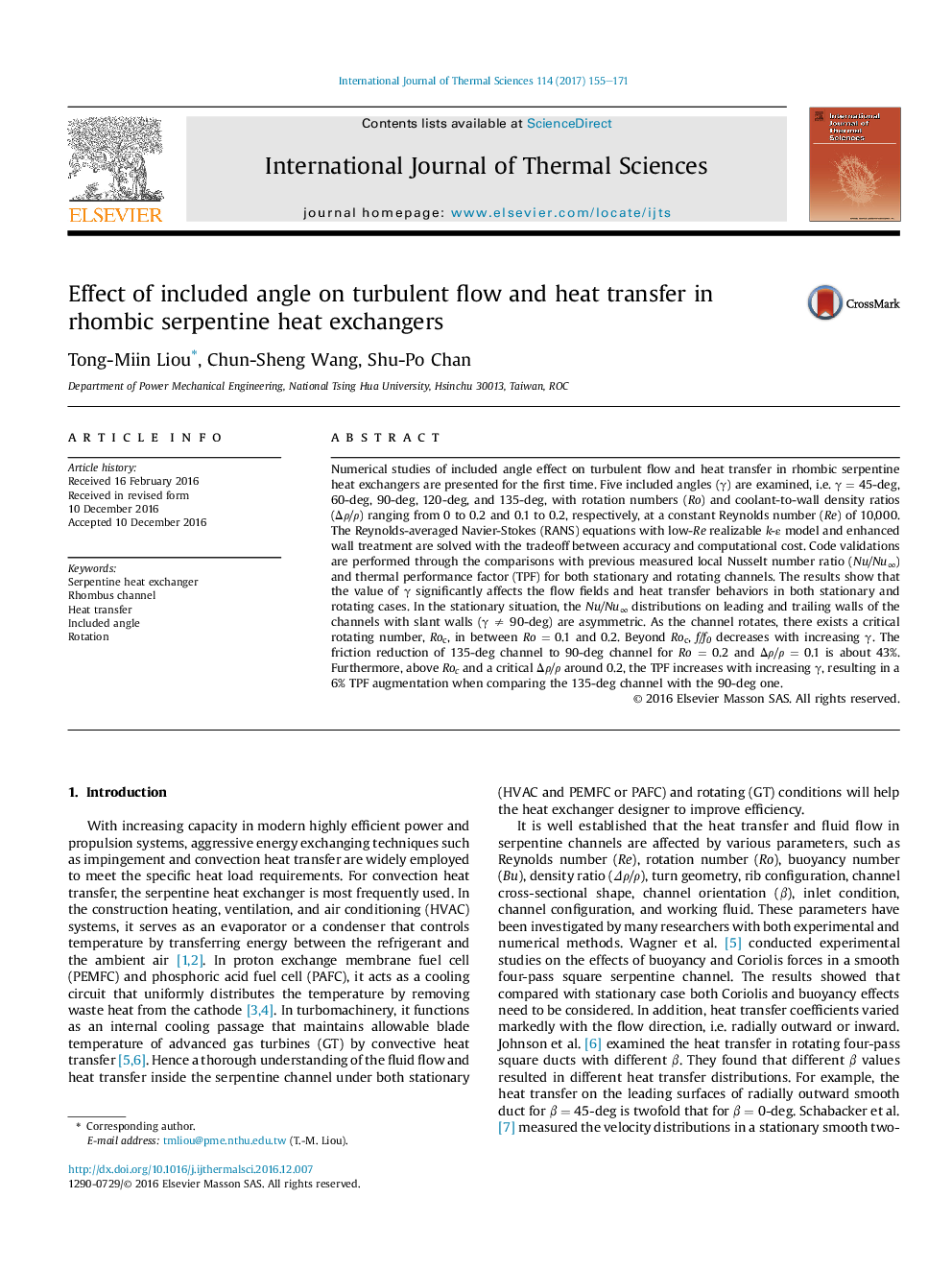| Article ID | Journal | Published Year | Pages | File Type |
|---|---|---|---|---|
| 4995364 | International Journal of Thermal Sciences | 2017 | 17 Pages |
Abstract
Numerical studies of included angle effect on turbulent flow and heat transfer in rhombic serpentine heat exchangers are presented for the first time. Five included angles (γ) are examined, i.e. γ = 45-deg, 60-deg, 90-deg, 120-deg, and 135-deg, with rotation numbers (Ro) and coolant-to-wall density ratios (ÎÏ/Ï) ranging from 0 to 0.2 and 0.1 to 0.2, respectively, at a constant Reynolds number (Re) of 10,000. The Reynolds-averaged Navier-Stokes (RANS) equations with low-Re realizable k-ε model and enhanced wall treatment are solved with the tradeoff between accuracy and computational cost. Code validations are performed through the comparisons with previous measured local Nusselt number ratio (Nu/Nuâ) and thermal performance factor (TPF) for both stationary and rotating channels. The results show that the value of γ significantly affects the flow fields and heat transfer behaviors in both stationary and rotating cases. In the stationary situation, the Nu/Nuâ distributions on leading and trailing walls of the channels with slant walls (γ â 90-deg) are asymmetric. As the channel rotates, there exists a critical rotating number, Roc, in between Ro = 0.1 and 0.2. Beyond Roc, f/f0 decreases with increasing γ. The friction reduction of 135-deg channel to 90-deg channel for Ro = 0.2 and ÎÏ/Ï = 0.1 is about 43%. Furthermore, above Roc and a critical ÎÏ/Ï around 0.2, the TPF increases with increasing γ, resulting in a 6% TPF augmentation when comparing the 135-deg channel with the 90-deg one.
Keywords
Related Topics
Physical Sciences and Engineering
Chemical Engineering
Fluid Flow and Transfer Processes
Authors
Tong-Miin Liou, Chun-Sheng Wang, Shu-Po Chan,
